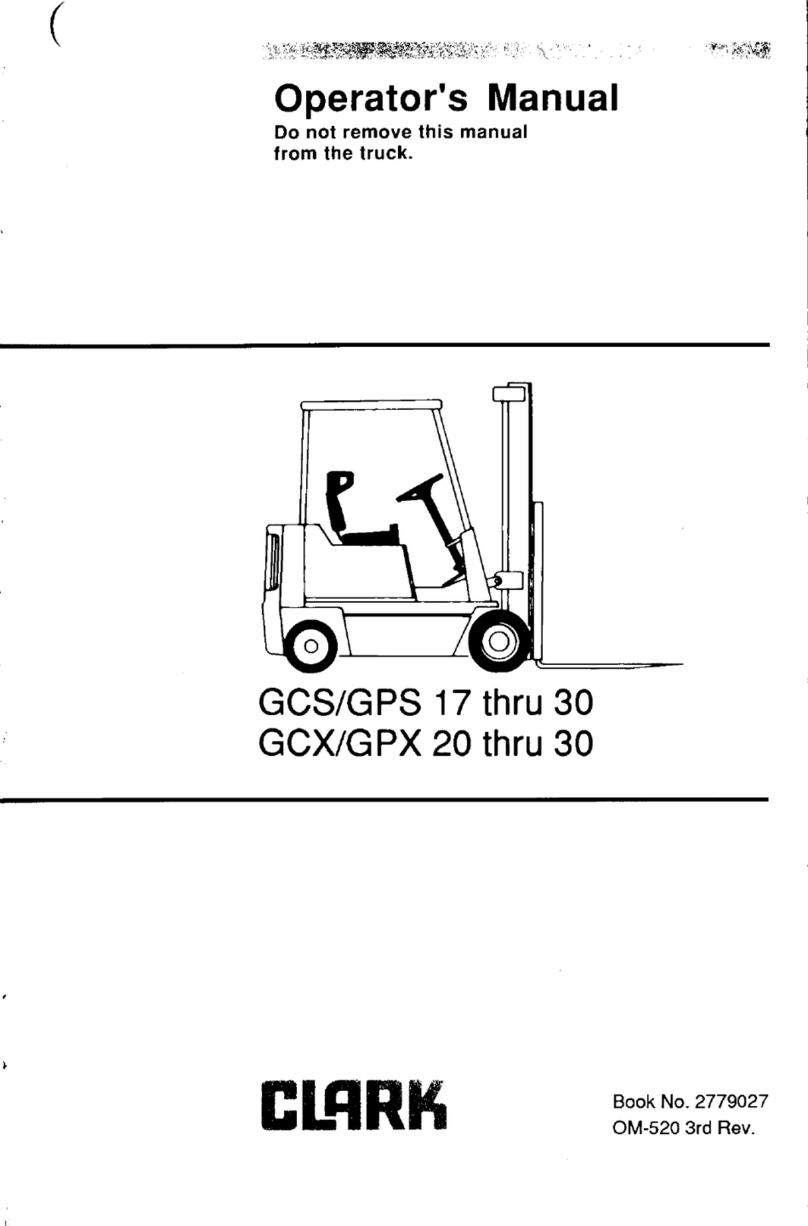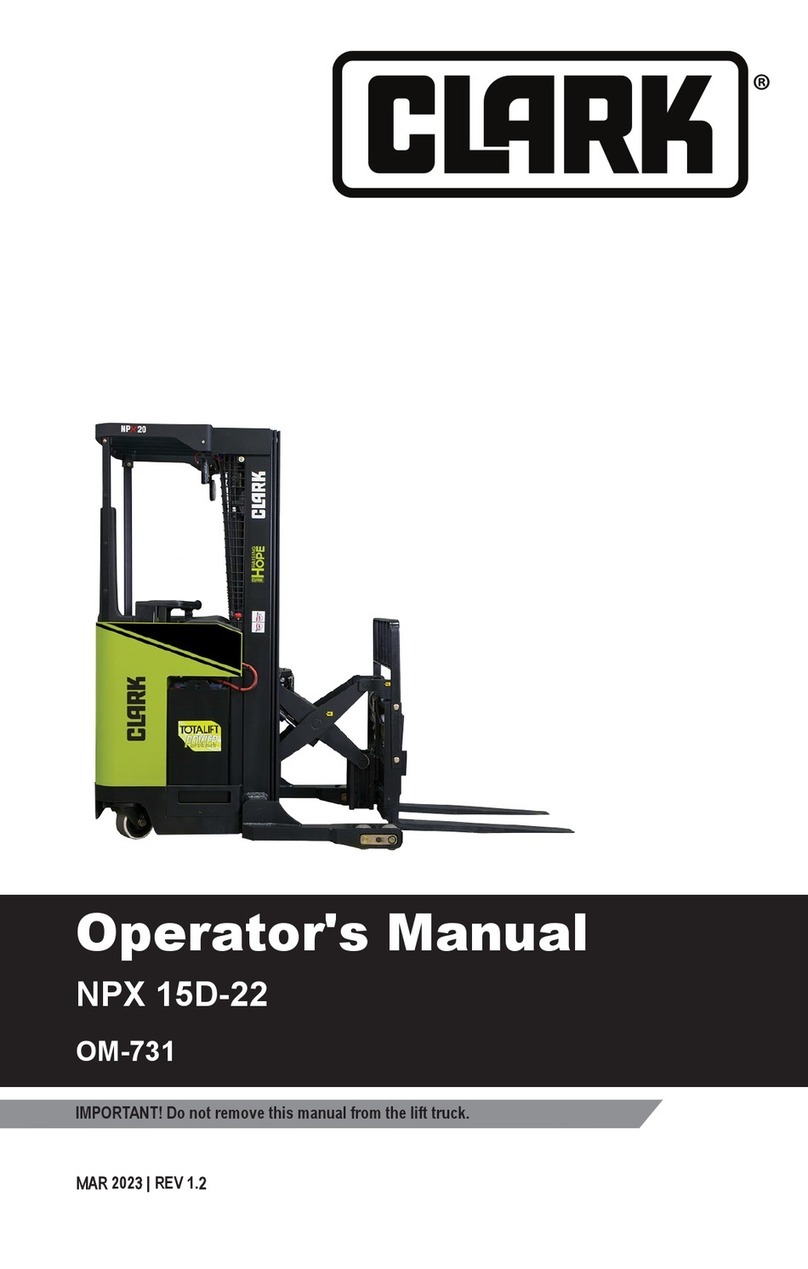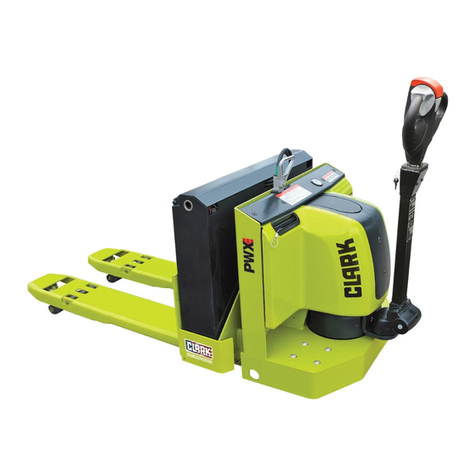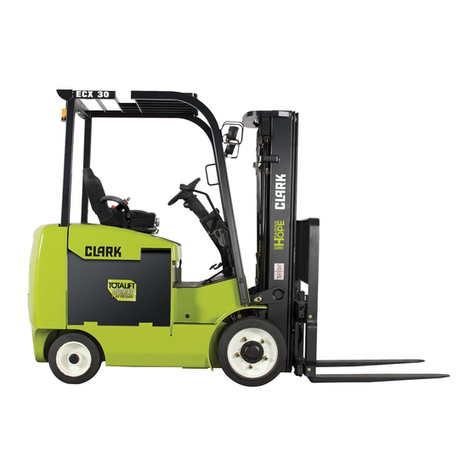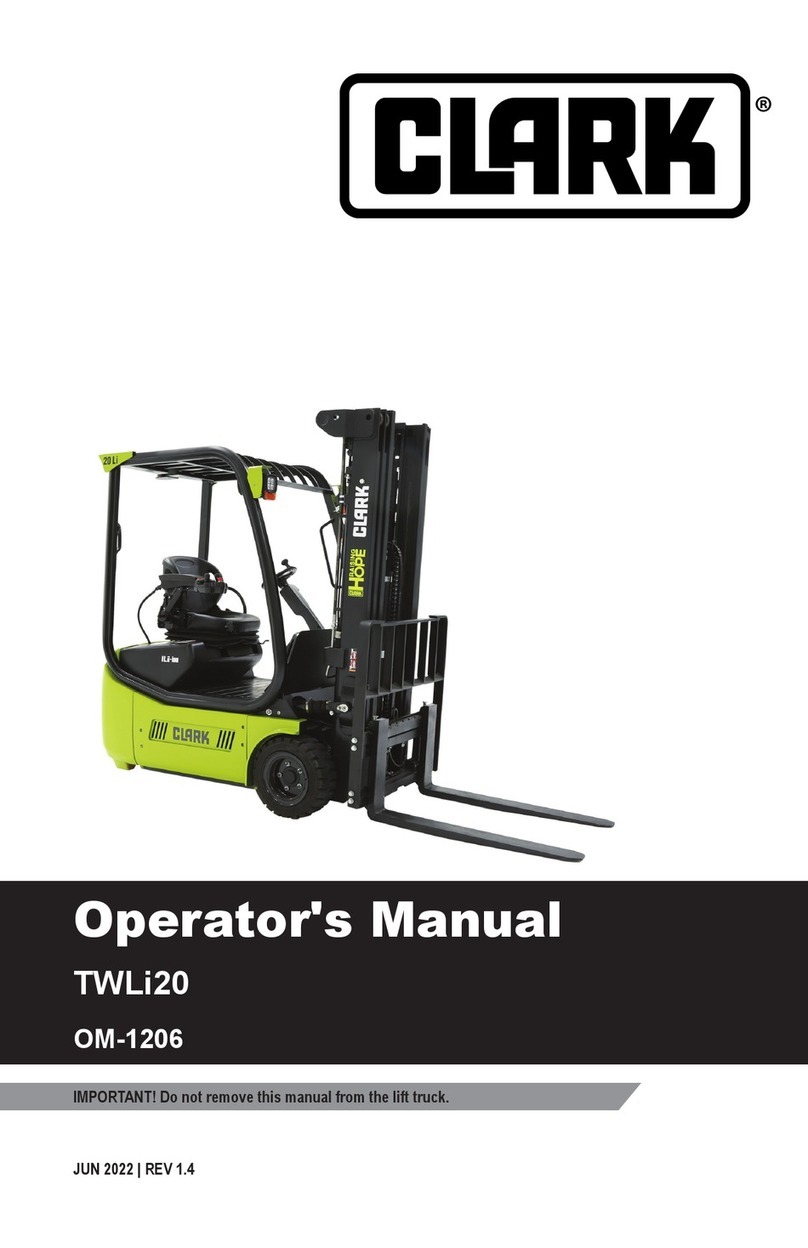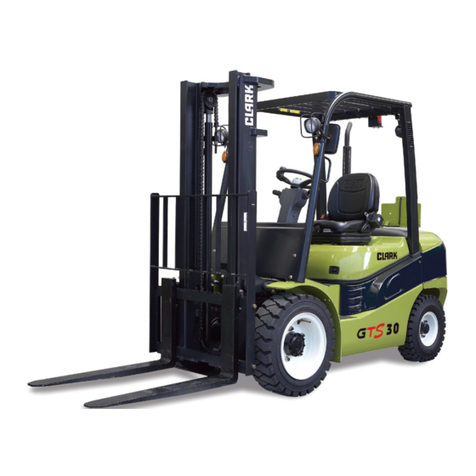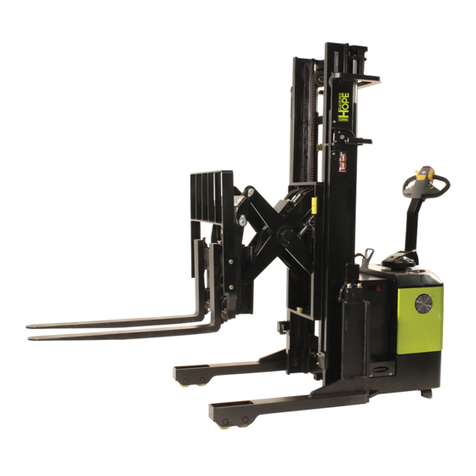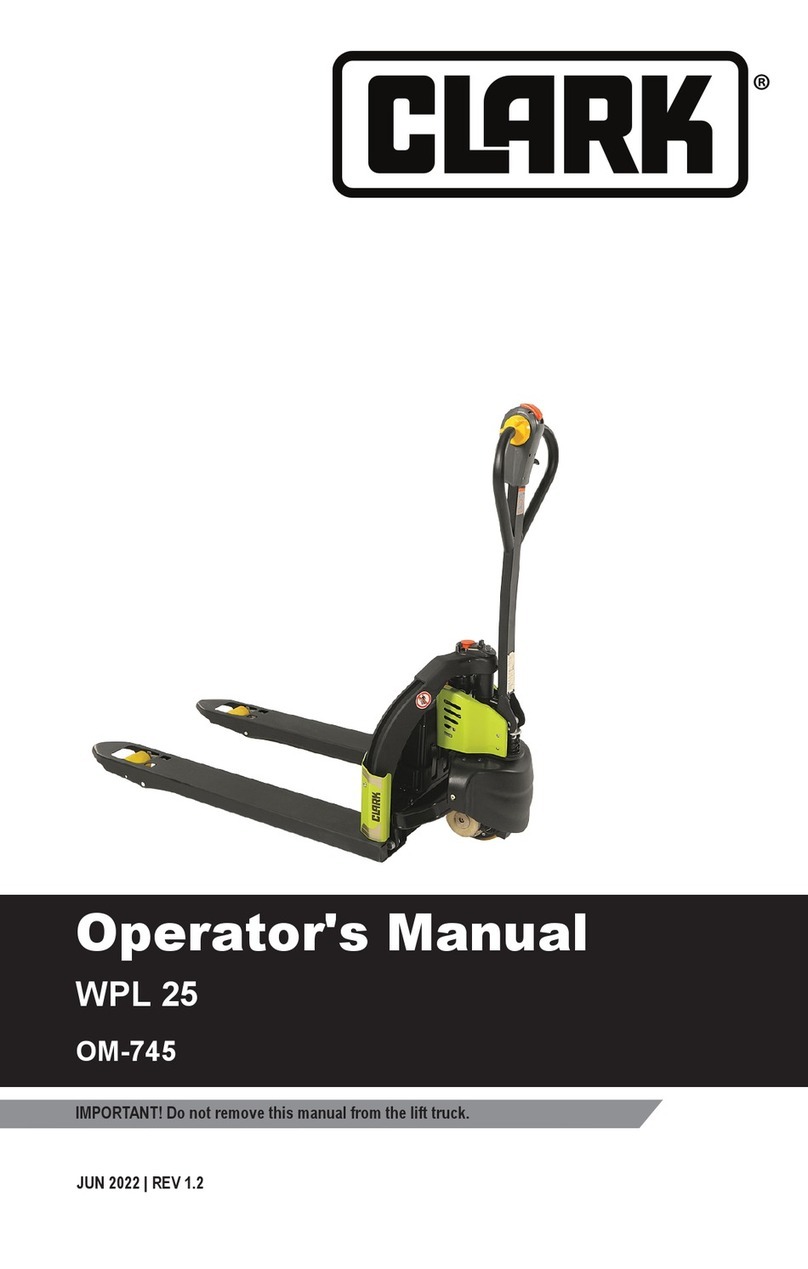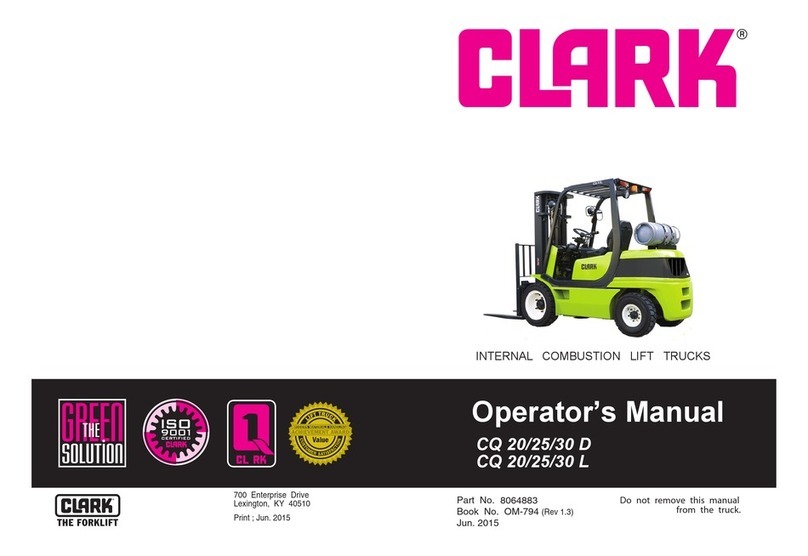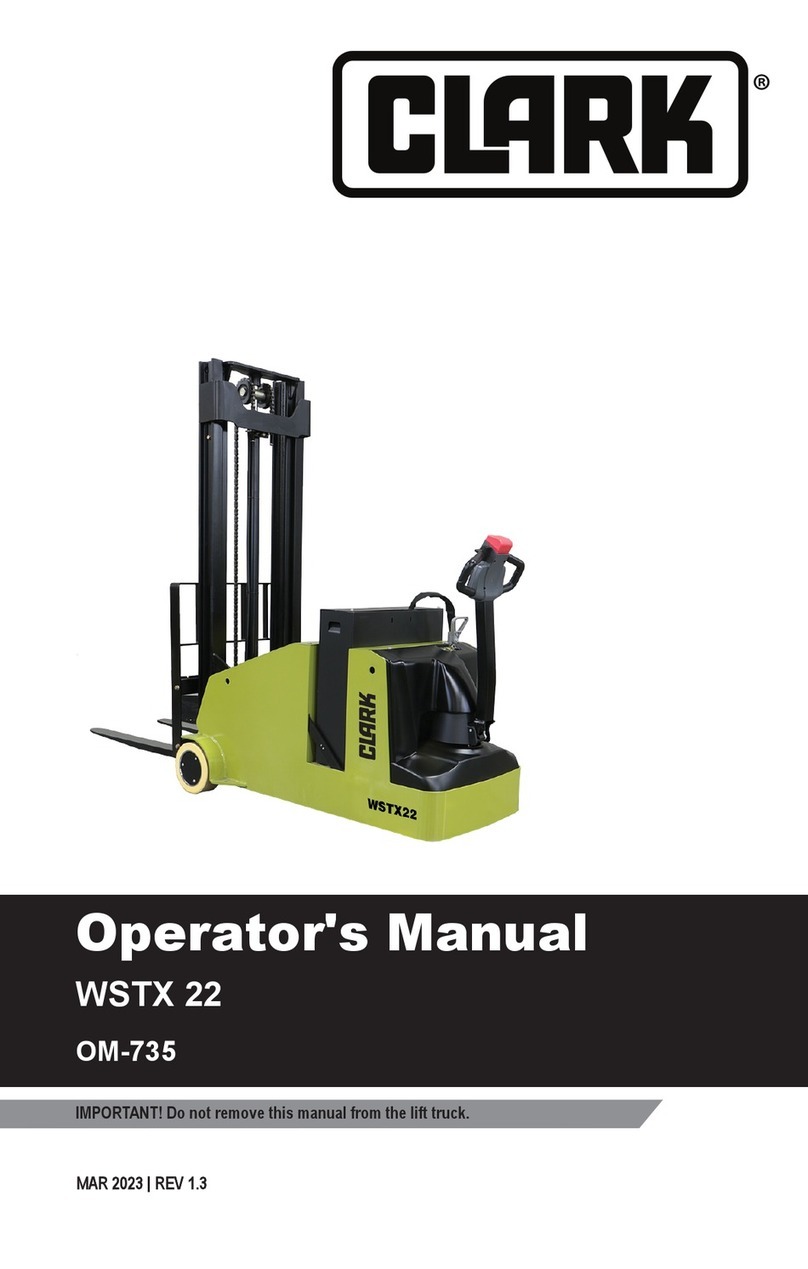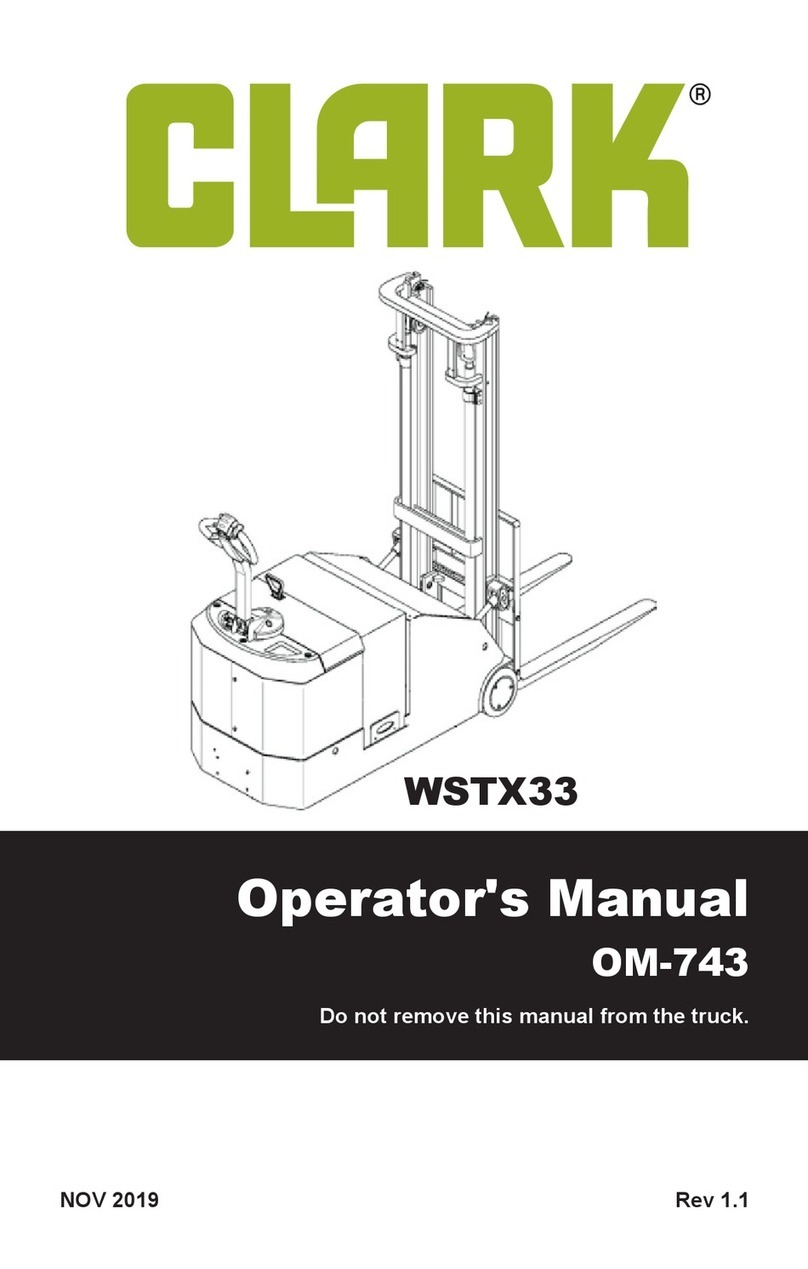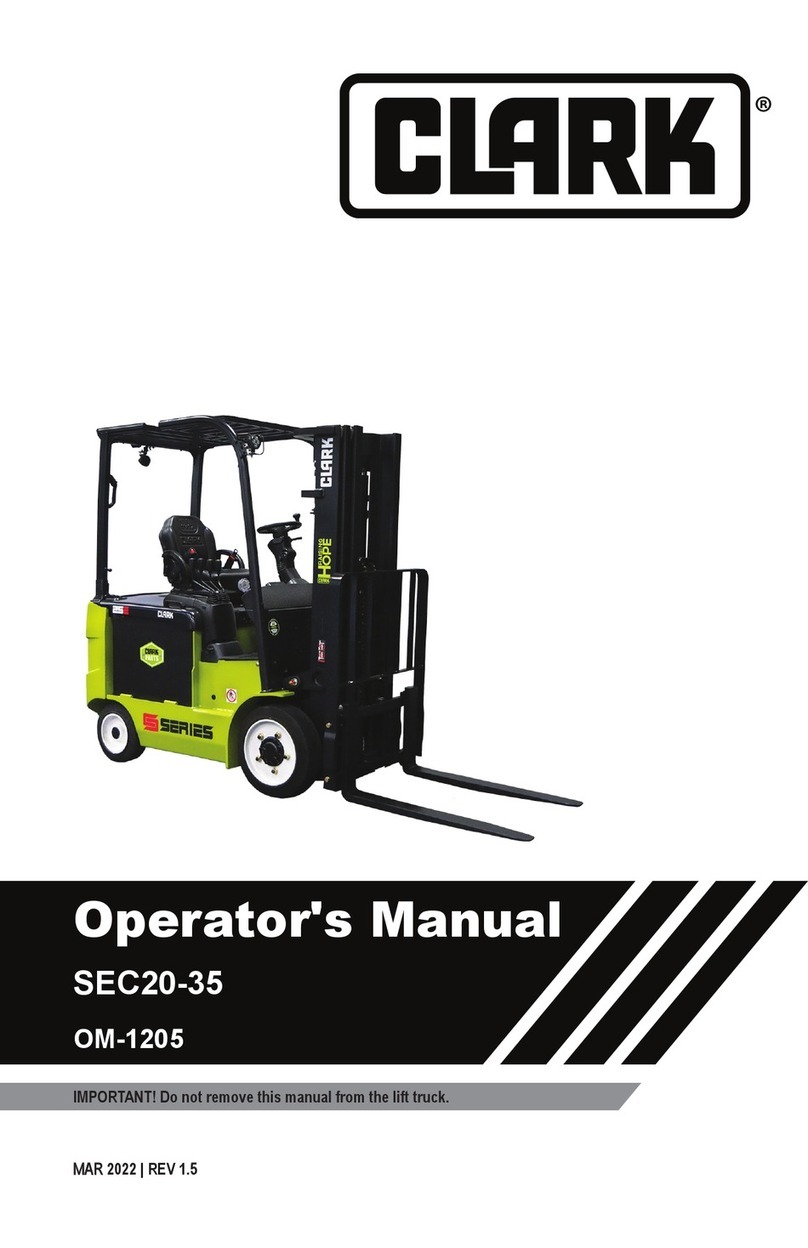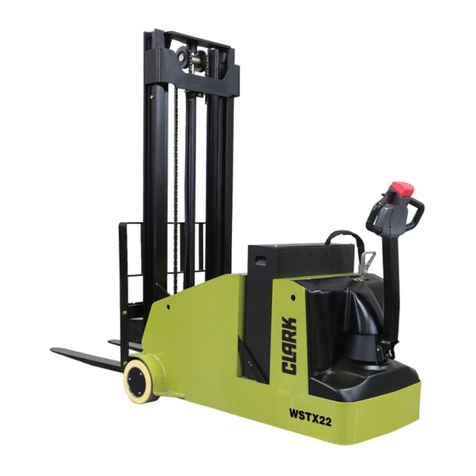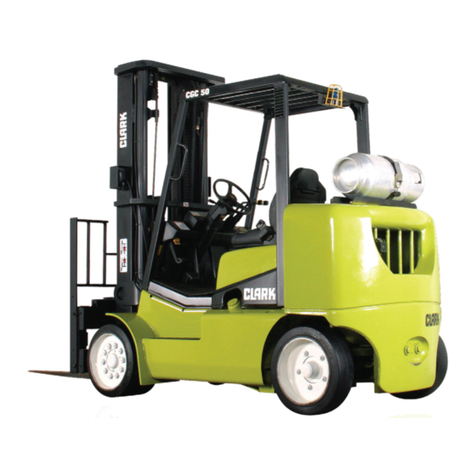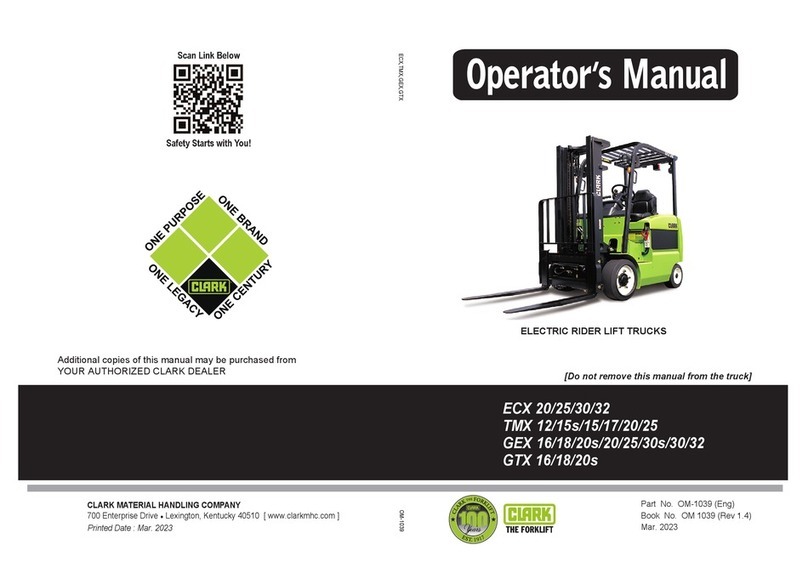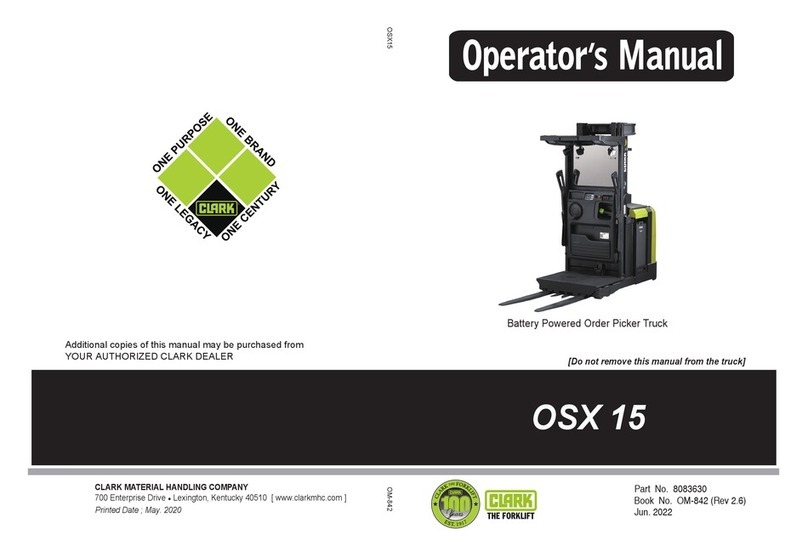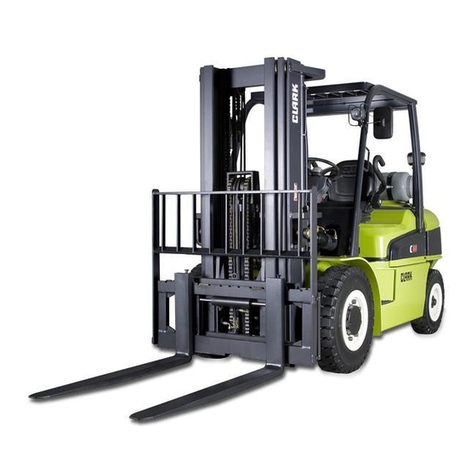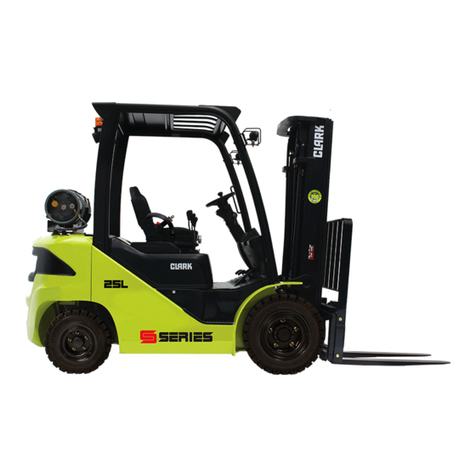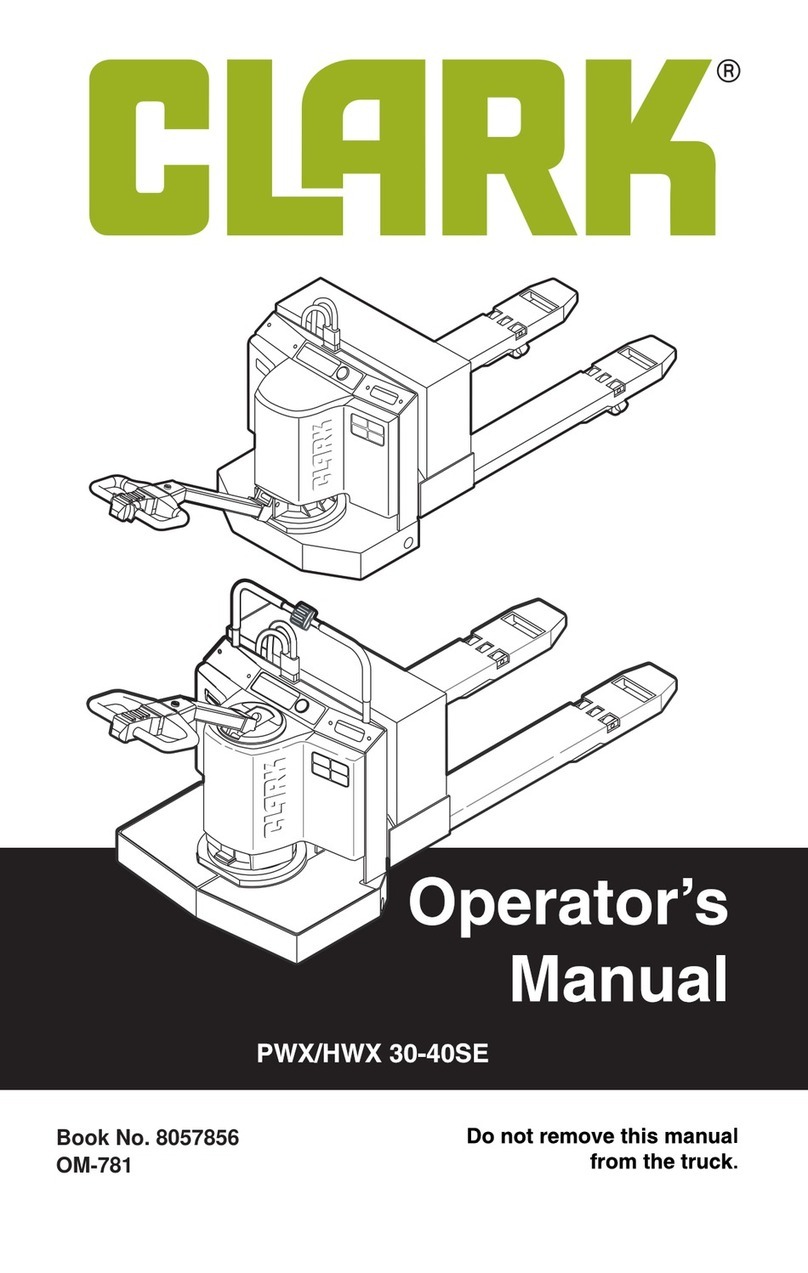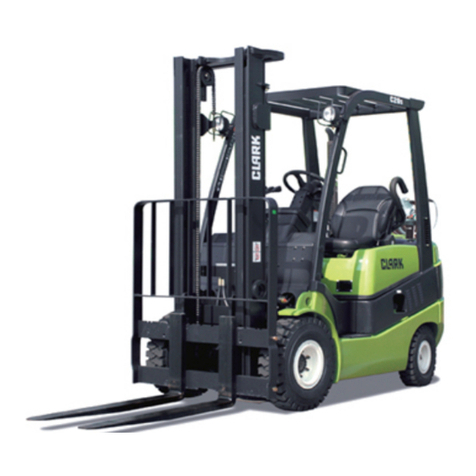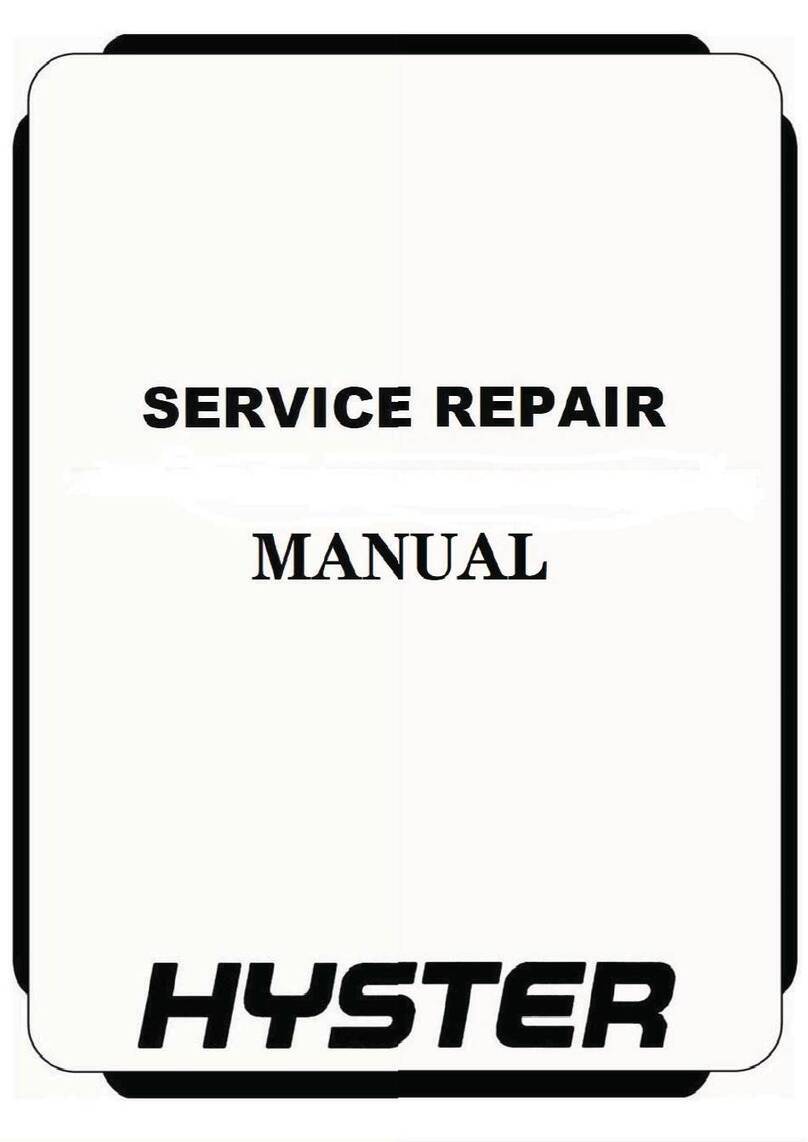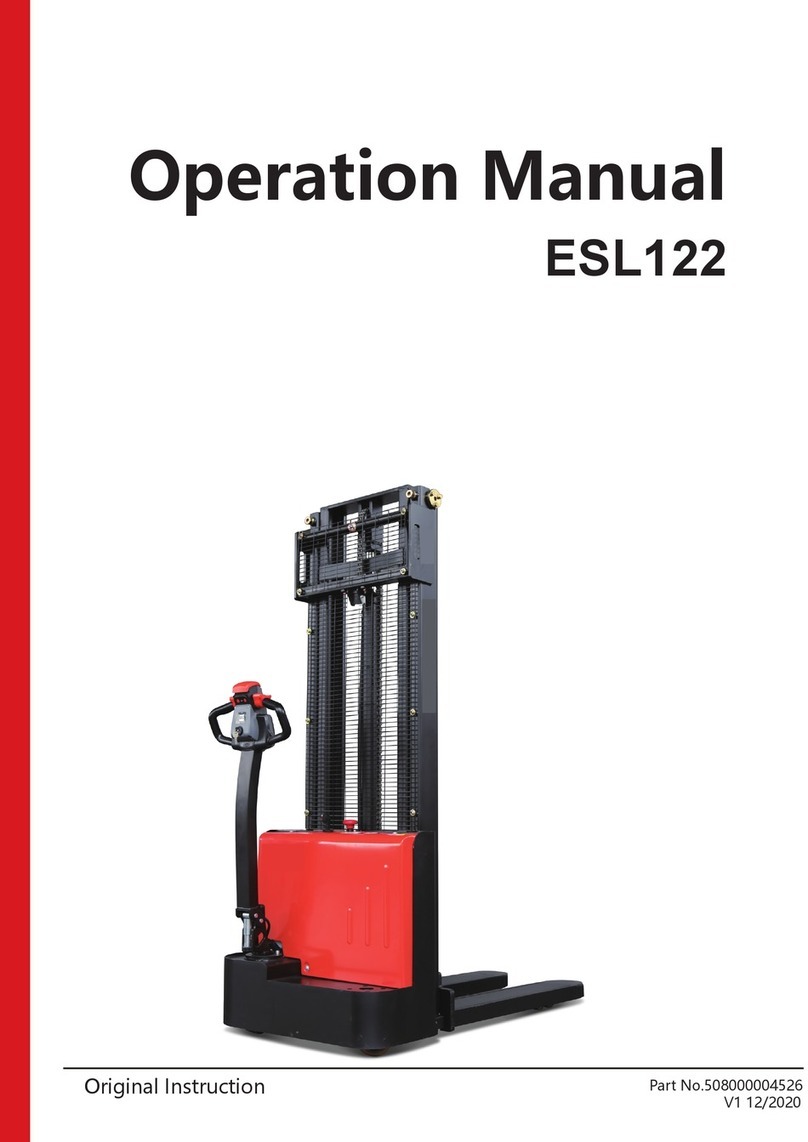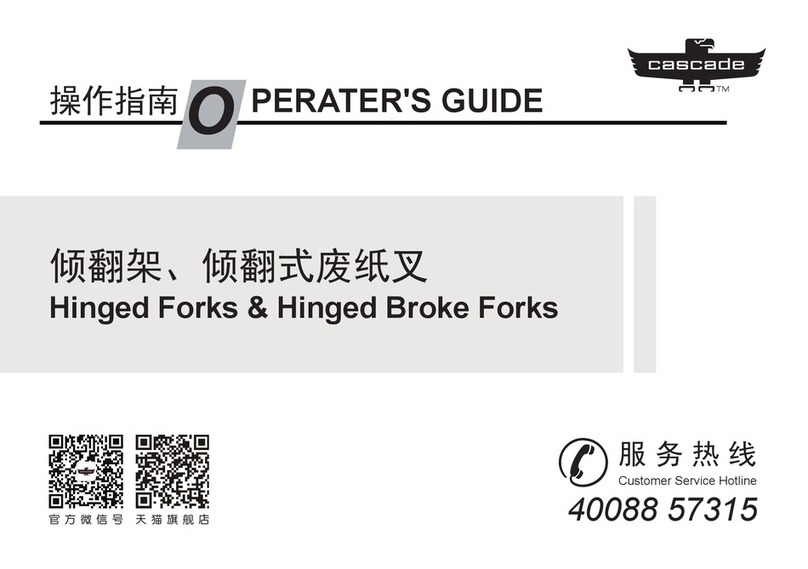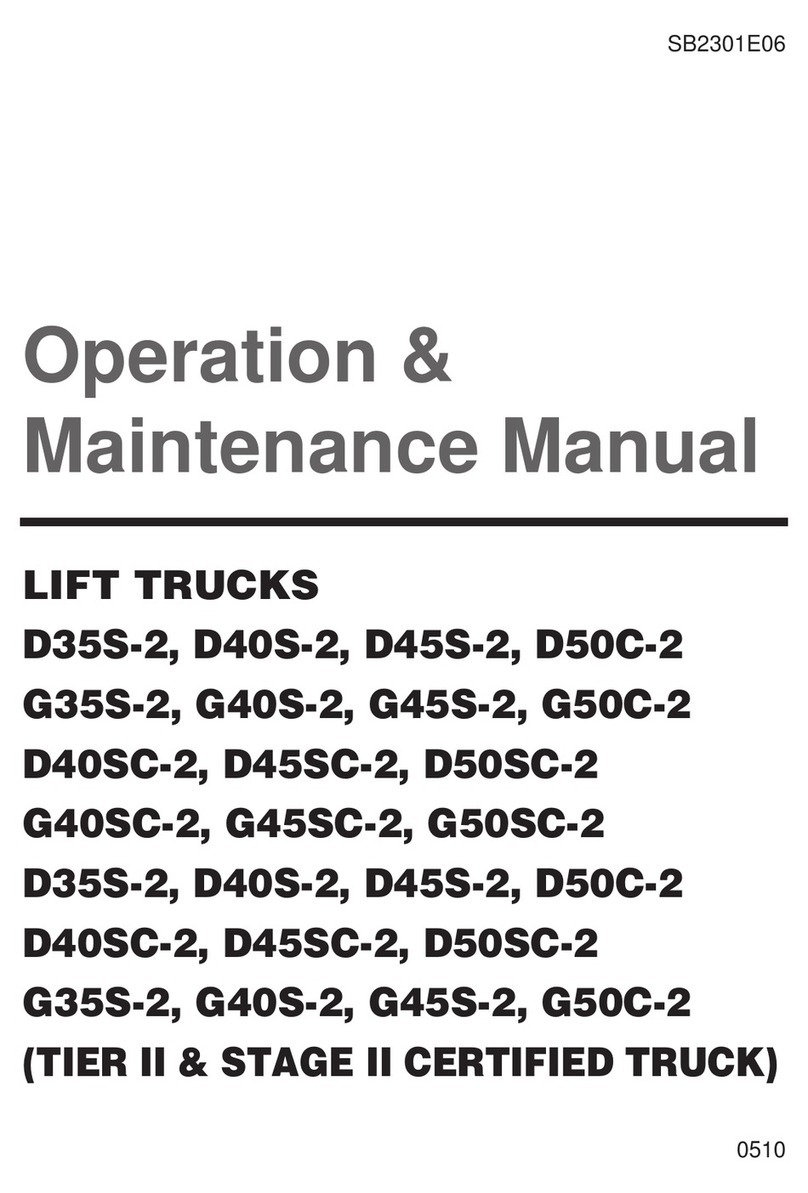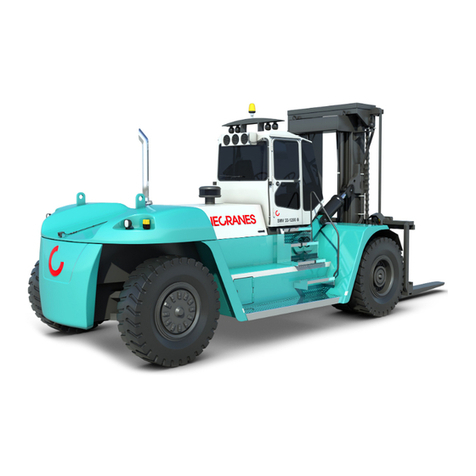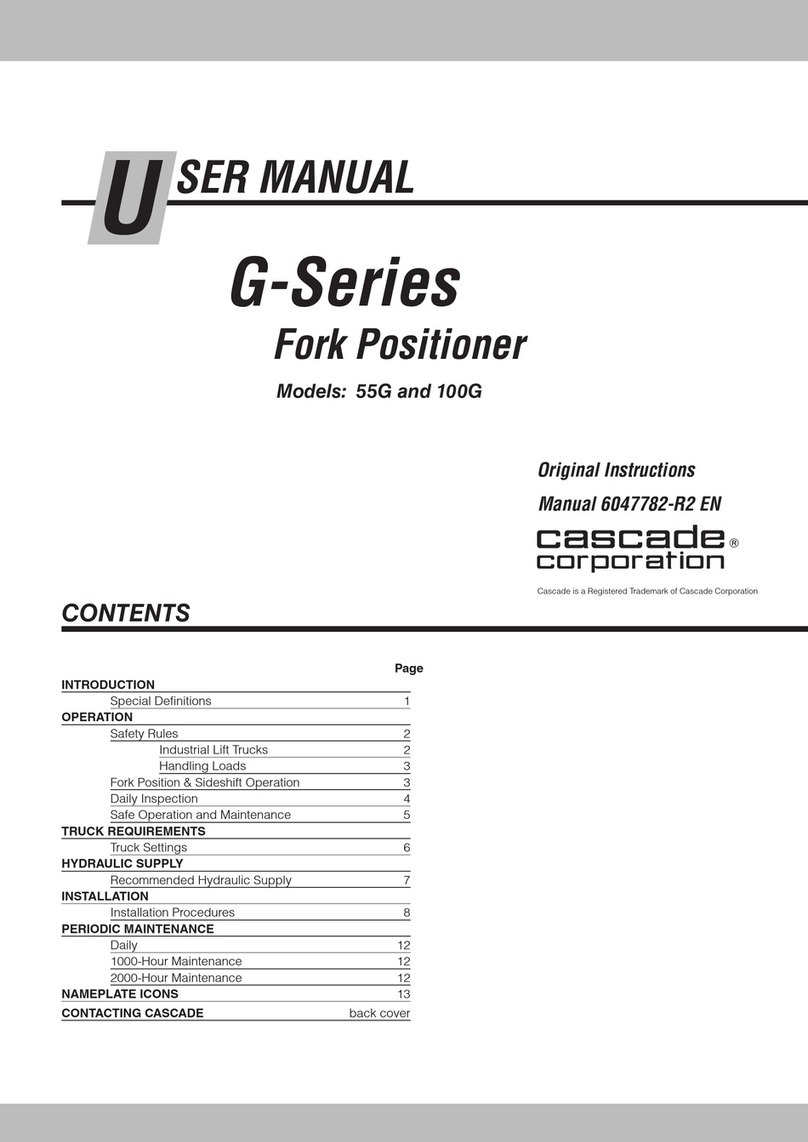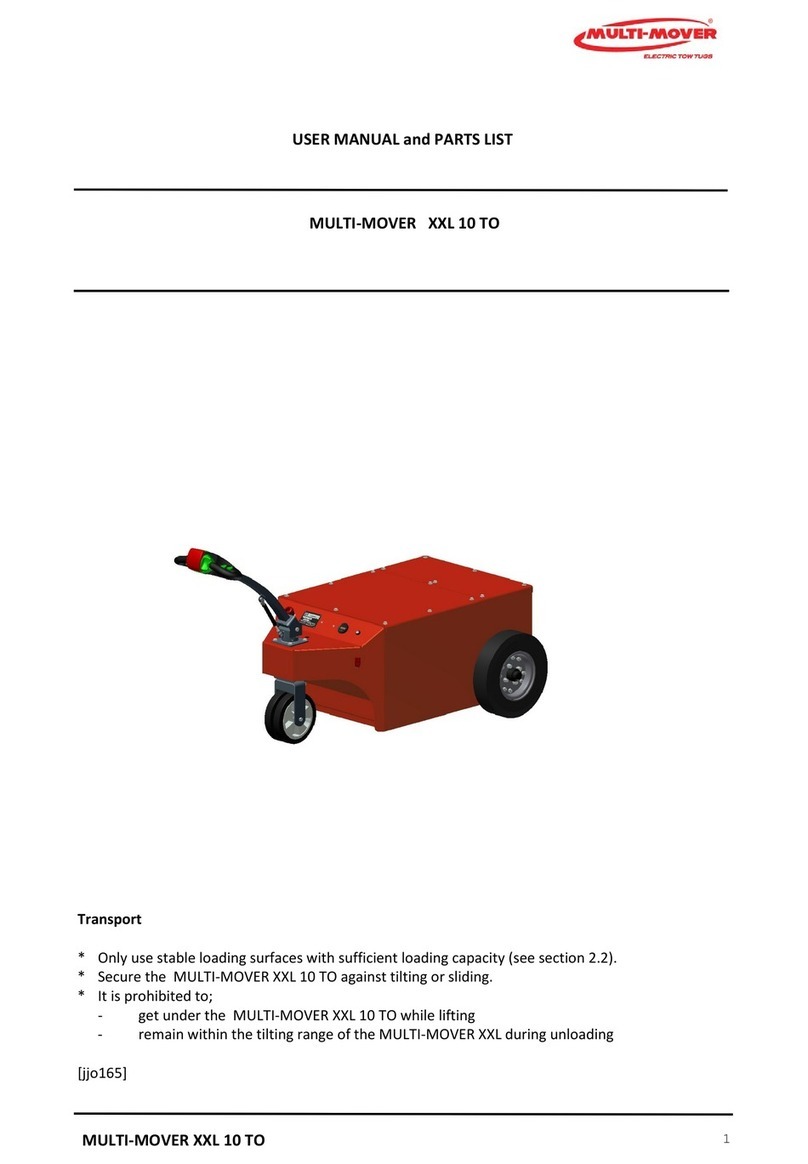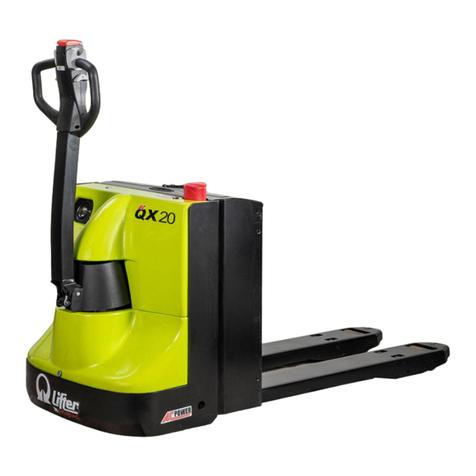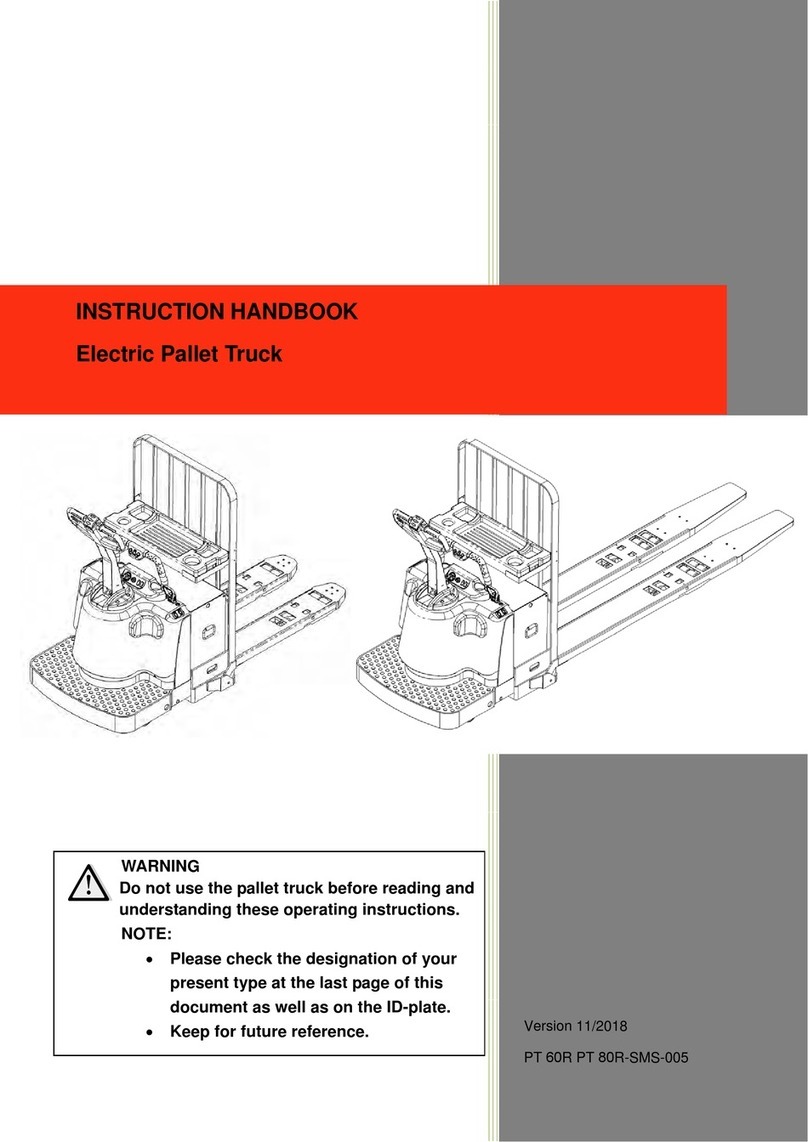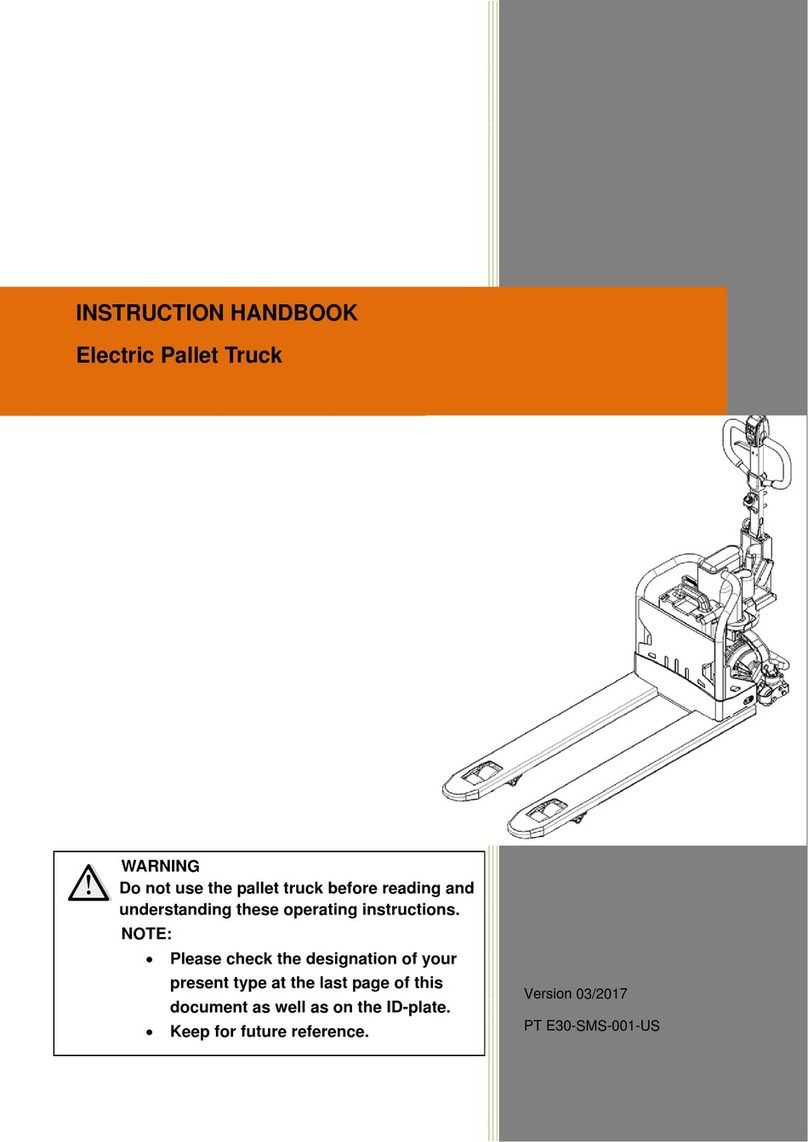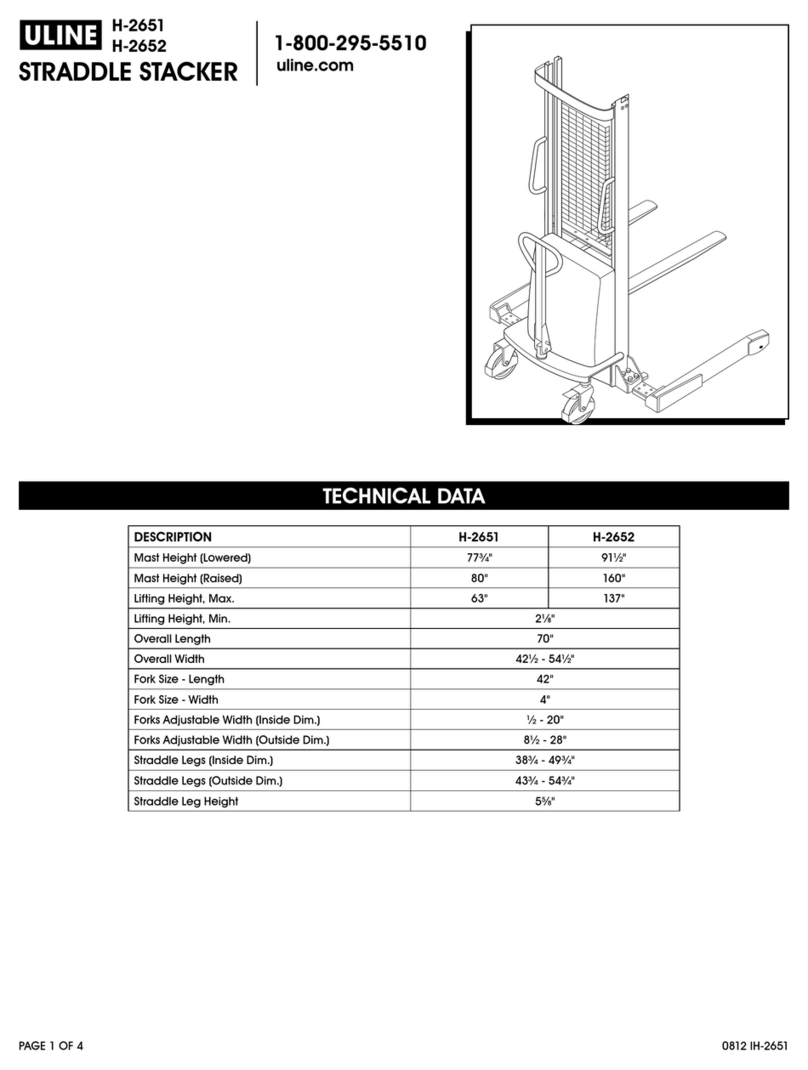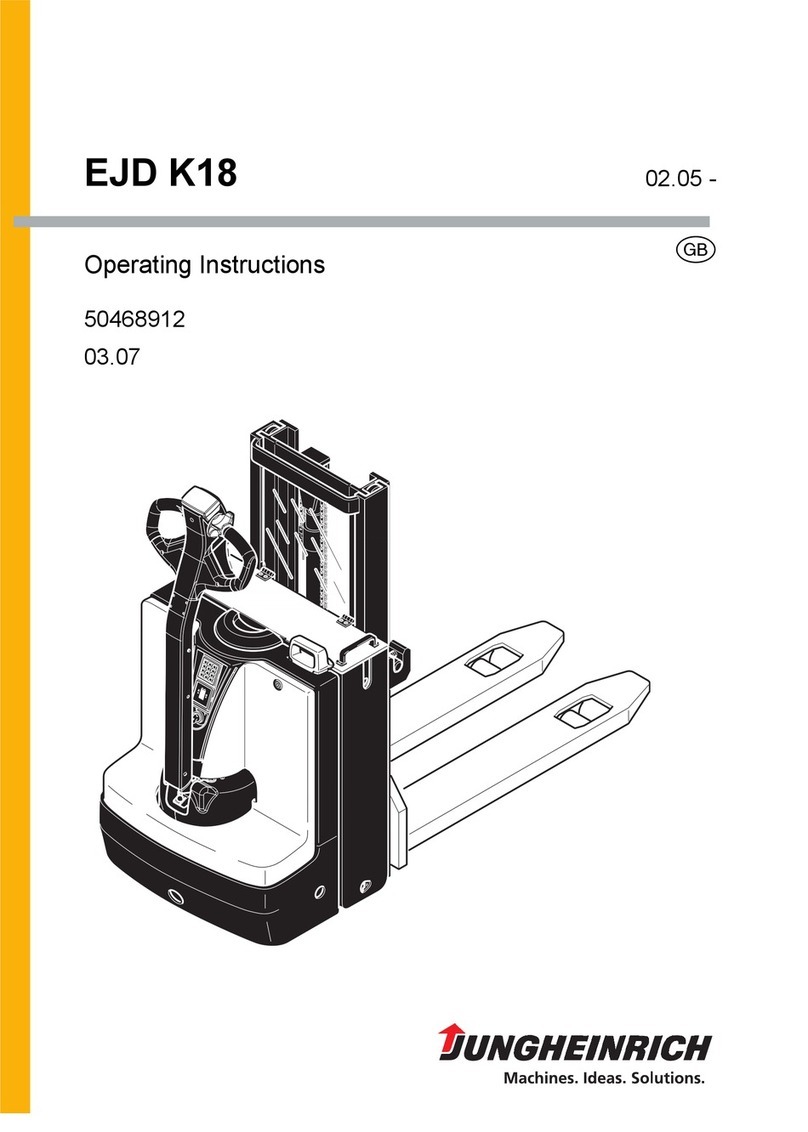
viii How to Use this Manual
How to Use this Manual
This manual is a digest of essential information about the safe
operation, the features and functions and explains how to maintain
your lift truck. This manual is organized into nine major parts:
Section 1, General Safety Rules, reviews and illustrates accepted
practices for safe operation of a lift truck.
Section 2, Operating Hazards, warns of conditions that could cause
damage to the truck or injury to the operator or other personnel.
Section 3, Common Truck, describes the most common operating
components, systems, controls, and other features of your truck and
tells how they function.
Section 4, Operator Compartment and Controls, discribes the
operating components, system, controls, and other features of your
truck and tells how they function.
Section 5, Operating Procedures, discusses specific instructions
on the safe, efficient operation of your lift truck.
Section 6, Operator Maintenance and Care, presents details on
how to perform the operator's daily safety inspection and refuel the
lift truck.
Section 7, Emergency Towing, gives instructions for towing your
truck in an emergency.
Section 8, Planned Maintenance, describes the PM program.
Section 9, Specifications, provides reference information and data
on features, components, and maintenance items.
Also, the Index helps you locate information about various topics.
NOTICE: The descriptions and specifications included in this manual
were in effect at the time of printing. CLARK Material Handling
Company reserves the right to make improvements and changes in
specifications or design. Please check with your authorized CLARK
dealer for information on possible updates or revisions.
The examples, illustrations, and explanations in this manual should
help you improve your skill and knowledge as a professional lift truck
operator and take full advantage of the capabilities and safety
features of your new lift truck.

